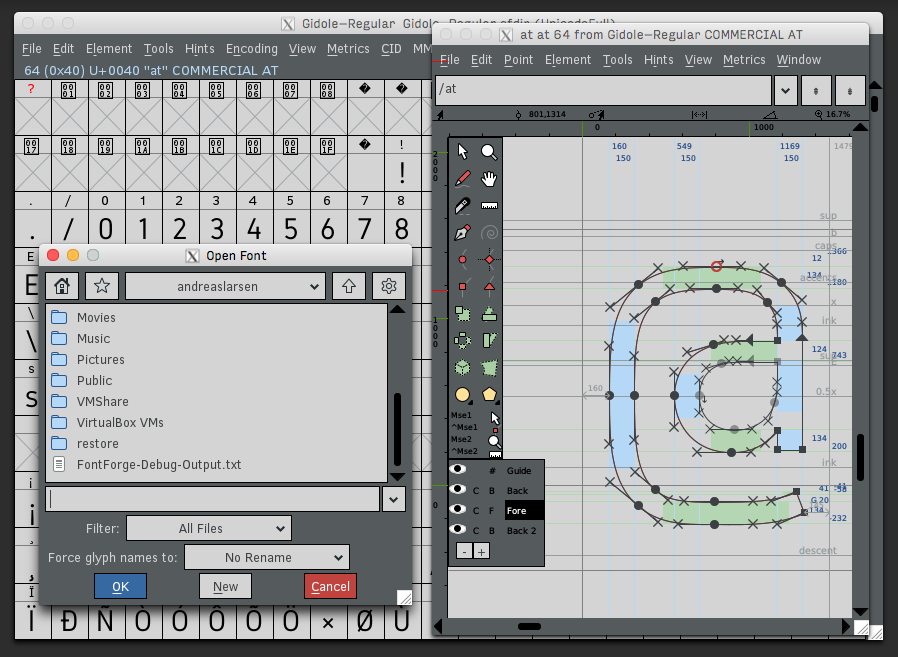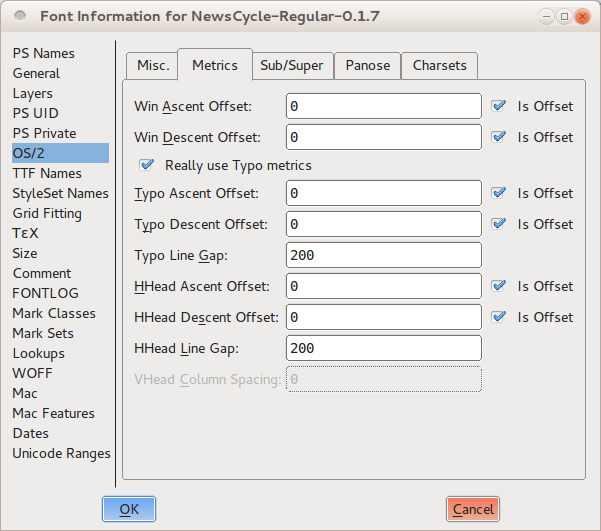

FONTFORGE XUID PLUS
We will also need to create the TeX Font Metrics (TFMs) so that TeX can access the metric data describing our fonts – the width, height, depth plus any kerning and linatures we care to add.
FONTFORGE XUID FULL
By re-encoding the base Type 42 font we can generate a range of 256-character fonts for TeX and DVIPS to exploit the full range of glyphs in the original TrueType font – such as a true small caps font if the TrueType font has them. Many Truetype-flavoured OpenType fonts (and thus the resulting Type 42 PostScript font) contain hundreds, if not thousands, of glyphs – making the 8-bit world of the traditional PostScript Encoding Vector little more than a tiny window into the rich array of available glyphs.

In addition, we’ll look at using font encoding and the creation of TeX Font Metrics to enable access to the rich set of glyphs in a modern TrueType-flavour OpenType font. The idea is that we’ll convert TrueType-flavoured OpenType fonts to Type 42 PostScript fonts and include the Type 42 font data into DVIPS’s PostScript output stream using the DVIPS -h filename mechanism. This post looks at just one way to use TrueType-flavoured OpenType fonts with the traditional TeX–DVIPS–PostScript–PDF workflow which is usually associated with the 8-bit world of Type 1 PostScript fonts. Modern TeX(-based) engines, such as XeTeX and LuaTeX, provide direct access to using OpenType fonts, albeit using different philosophies/methods. Now to get on with some of those household tasks I’ve put off whilst writing this – and thanks to my partner, Alison Tovey, who has waited patiently (well, almost :-)) whilst I was glued to WordPress! Introduction In some areas I’ve had to omit some finer details because it would make the article way too long and I’d probably run out of steam and never finish it: think of it as a “getting started” tutorial. It was fun to write and program but it certainly absorbed many hours of my evenings and weekends.

This is a lengthy post which covers numerous topics on using fonts with TeX and DVIPS. Posted in OpenType, Post about about fonts, glyphs and characters, Unicode Type 42 PostScript fonts with DVIPS: FreeType, LCDF Typetools and re-encoding The following screenshot shows the font cmap table(s) – the font’s mechanism to map from character codes (e.g., Unicode) to the internal, and font-specific, glyph identifiers (indices).ĭisplaying a wealth of information on the low-level data for glyphs. Summary of key data contained at the start of the font. On the left is the internal font structure: at the top is the “root” entry where you can see the glyphs in the font. Very useful indeed! It’s worth noting that OTMaster has many other features in addition to displaying the technical data – including some features present in Microsoft’s VOLT – and in some areas they are better implemented than in VOLT, particularly the ability to preview multiple glyphs with mark-to-base positioning. Programmers will note that you are provided with information on the data types of various entries – the same data types referenced in Microsoft’s specification. Here are some screenshots showing the internals of Scheherazade.

In the screenshots below, OTMaster is displaying the open source OpenType (TrueType) font Scheherazade. This post is not intended as an “advert” for the software, just a quick demo of a really great tool that you may not have heard of so here are some screenshots of what it will show you. At the time of writing DTL OTMaster costs about 250 euros but the time it can save you makes it worth every penny. Reading through it is not a task for the faint-hearted! I’m interested to understand some parts of it so I recently purchased a copy of DTL OTMaster which has proved to be absolutely invaluable. Microsoft’s official specification for the OpenType font file format is a somewhat dry and, of course, a very technical document.


 0 kommentar(er)
0 kommentar(er)
